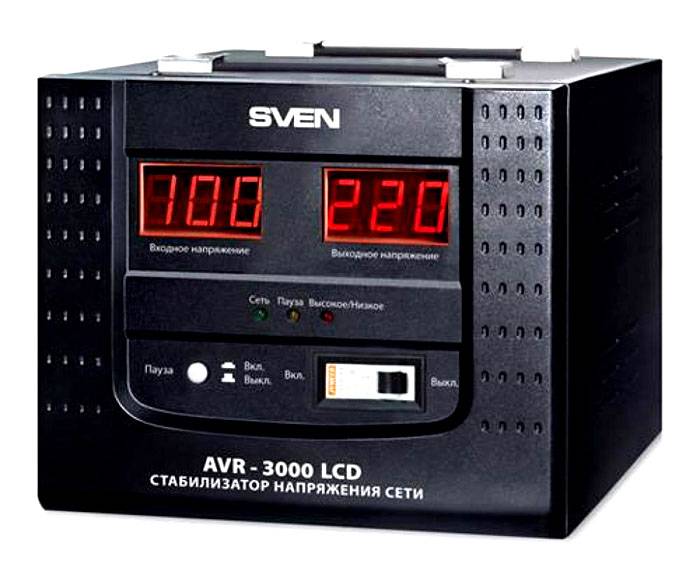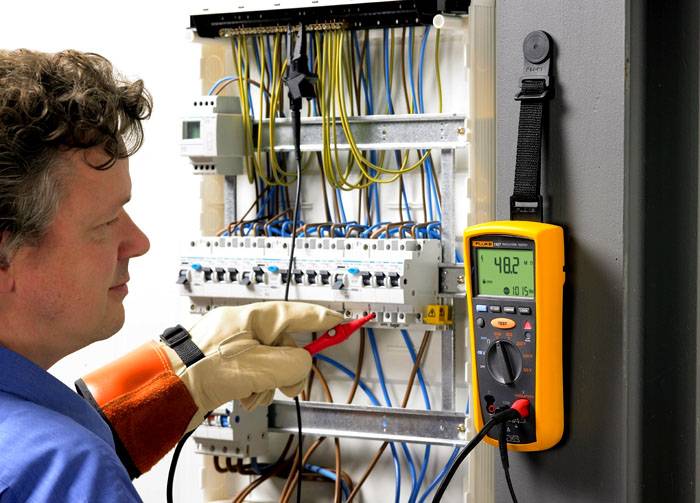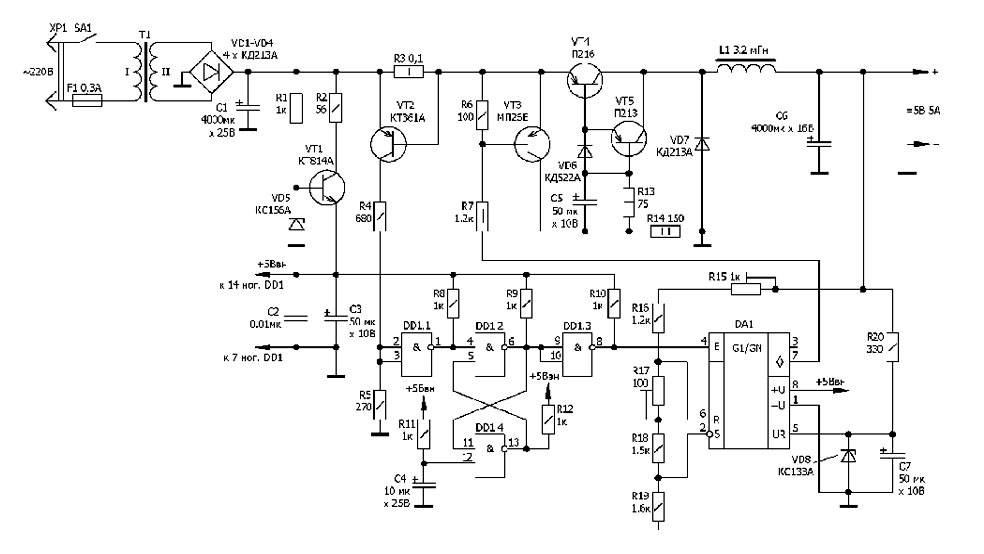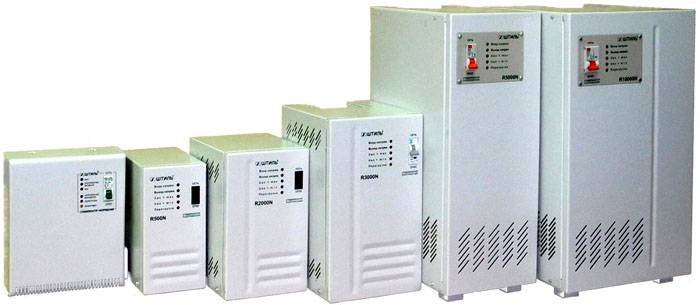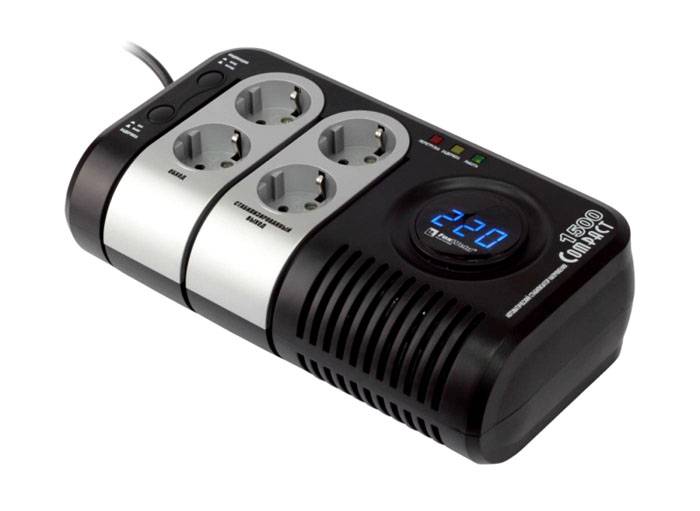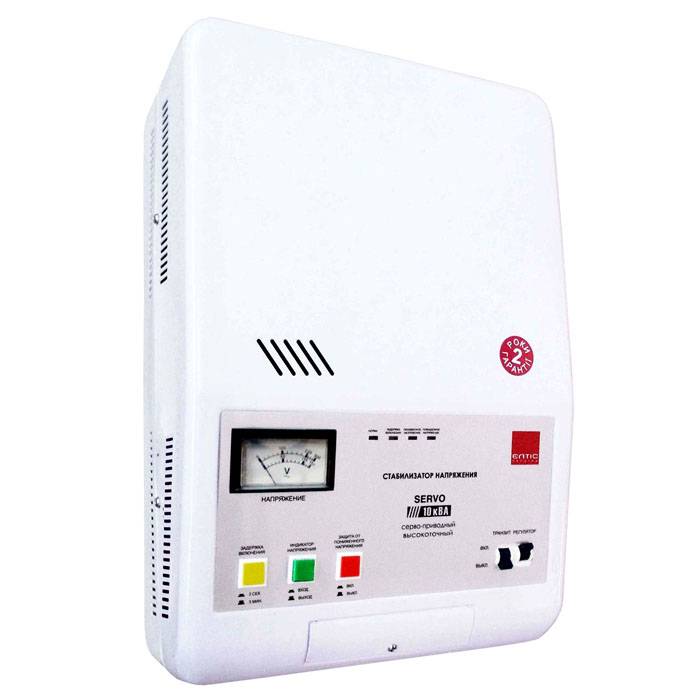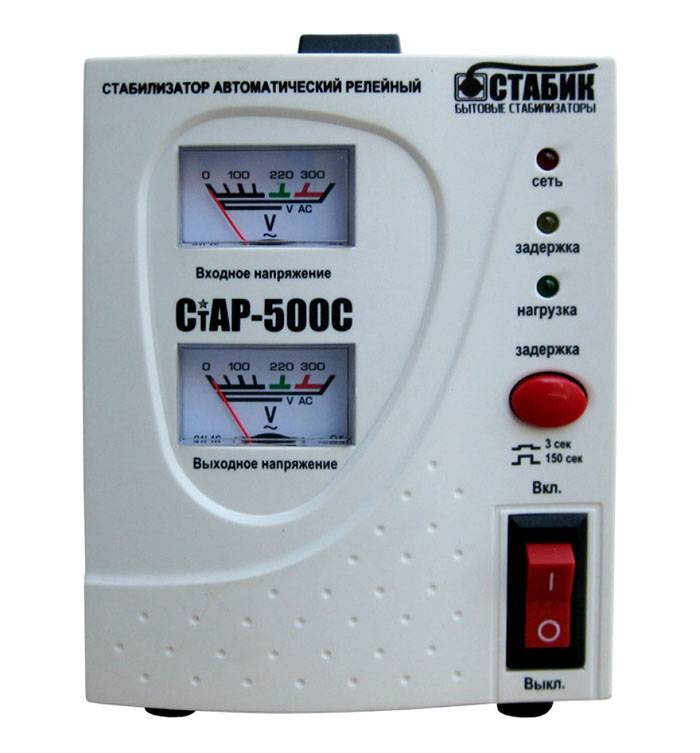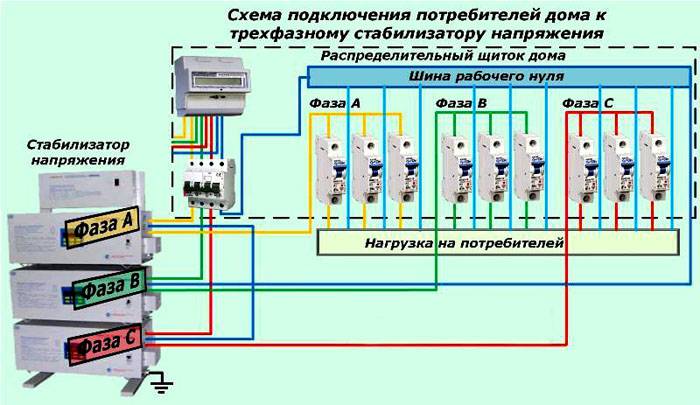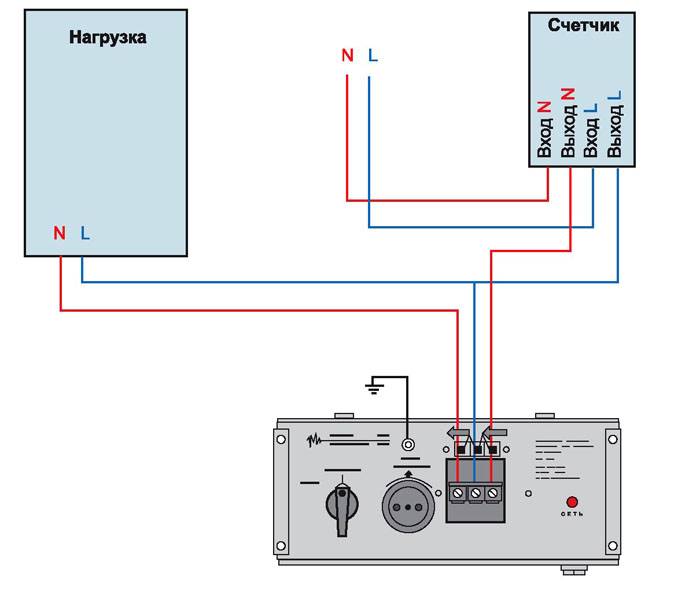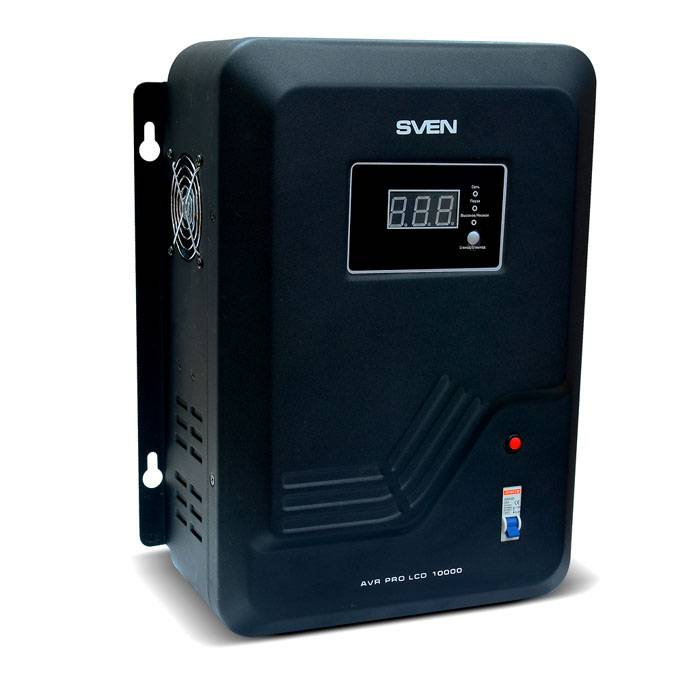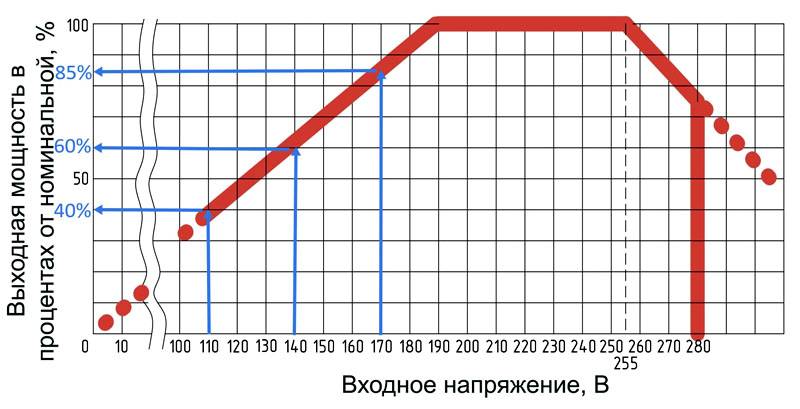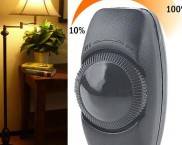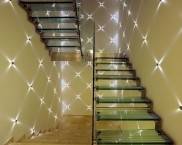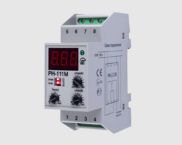Voltage stabilizer 220v for home: which one to choose, price and connection methods
Electricity consumption is growing with the advent of a large number of devices that facilitate human life. Residents of megalopolises are lucky in this regard: they do not suffer from power outages. In large cities, there are opportunities to keep the electricity grid in good condition. But everyone else often has to deal with power surges. It is good if it is done with flashing lights, but often interruptions lead to the failure of expensive devices. How to choose a 220v voltage stabilizer for your home in order to forget about this problem once and for all?
The content of the article
- 1 Voltage stabilizer 220v: which one to choose for the house, advantages and principle of operation
- 2 Types of stabilizers
- 3 Overview of voltage regulator wiring diagrams in a private house
- 4 Calculator for calculating the current-voltage characteristics of a voltage stabilizer
- 5 Prices of 220v voltage stabilizers for home
- 6 Bottom line: what you should remember when purchasing a device
- 7 Video: how to choose a voltage stabilizer for your home
Voltage stabilizer 220v: which one to choose for the house, advantages and principle of operation
It is known that organizations supplying electricity to consumers' homes often raise the voltage in networks designed for 220 - 380 volts by ten percent, or even more. The result is not only increased energy bills, but also the failure of sensitive devices, the loss of valuable data and failures in vital systems for humans.
What is a stabilizer for?
An elementary example: ten percent of the excess voltage in the network makes the lamp burn a third stronger and at the same time reduces its lifespan by almost half. And to pay for the operation of this lamp will have to twenty percent more.
The best way out in this situation is to buy voltage stabilizer 220v for a house of 10 kW or more, the power will depend on the number of connected appliances.
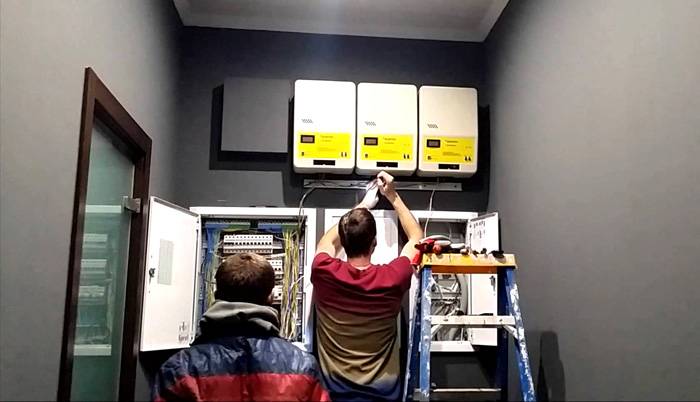
The device will provide a constant power voltage (220 volts) without drops and failures in the network
Benefits from using a stabilization device:
- saving energy costs;
- increasing the service life and performance of devices designed for normal mains voltage;
- saving on maintenance of electrical appliances by reducing the number of breakdowns associated with surges in the network.
How the device works
The simplest stabilizer consists of a pair of coils, isolated from one another and wound on one core. The source of electricity is connected to the first coil, and the consumer is connected to the second. Magnetic induction will convert voltage. The simplest device can be made by hand, voltage regulator circuit 220v:
In modern stabilization devices, the windings are connected by a galvanic method.
In addition to the automatic transformer, the device includes:
- an input voltage measuring device that supplies information to the control unit;
- control unit that regulates the current;
- protective device preventing short circuit and overload;
- additional protection against high-voltage discharge;
- continuous power supply mechanism.
Types of stabilizers
Devices for stabilizing voltage in the network are divided into three main types:
- Electronic stabilizers.
- Servo-driven devices.
- Relay devices.
Electronic stabilizers
The most modern type of stabilizing devices. They have maximum protection against overloads and surges due to electronic switches, thyristors or triacs, with a high response speed.
Helpful information! Possible deviations at the output of the electronic device do not exceed three volts.
If the question is, which one to choose a 220V voltage stabilizer for a home, where there is expensive high-tech equipment, it is better not to find such devices.They are more expensive than other types of devices with mechanical circuits.
Servo devices
The operation of this device is based on a change in the number of active turns in the secondary winding. The loop runner is driven by a miniature servo motor.
A servo device costs much less than an electric one, but it is inferior to the latter in response to power surges. In addition, this unit emits a low but noticeable noise. Such a device will not save expensive equipment from sudden voltage changes. It is usually installed in dachas where there is no sensitive technology.
The servo device can be made by hand. A 220V step-up voltage stabilizer can be made from a welding machine.
Relay devices
The transformer stabilization method is the simplest of the above. It is based on changing the number of turns in the winding of the transformer device. The relay reacts to voltage changes and disconnects or connects the required number of turns. The output is a stable voltage with an adjustment accuracy of eight percent. Such mechanisms are affordable and have a long service life due to overload resistance.
Which is the best voltage regulator: relay or electromechanical? It is rather difficult to give an unequivocal answer to this question. An electronic device will much more reliably protect home appliances, but its service life and cost are inferior to the simplest relay device.
Overview of voltage regulator wiring diagrams in a private house
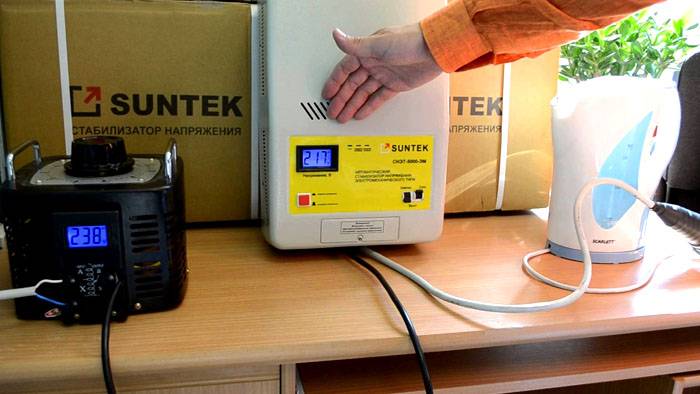
The main difficulty is usually caused by the selection of the power of the stabilizer for an apartment or house.
It should be borne in mind that due to the reactive power of some household electrical appliances, a peak load occurs at the time of start-up. It is on its size that the stabilizer should be counted on.In addition, it is important to take into account the transformation ratios, which, when the voltage drops and rises, "eat up" the power of the device.
Table 1. Transformation ratios
| Voltage | 130 | 150 | 170 | 210 | 220 | 230 | 250 | 270 |
|---|---|---|---|---|---|---|---|---|
| Coefficient | 1.77 | 1,55 | 1,35 | 1,10 | 1,05 | 1,10 | 1,35 | 1,55 |
A common stabilizing device for the whole house should be selected based on the total power of all electrical appliances, multiplied by 0.7 and the transformation ratio shown in the table.
The general diagram for connecting the transformer is as follows.
Calculator for calculating the current-voltage characteristics of a voltage stabilizer
Prices of 220v voltage stabilizers for home
Stabilizer units can be purchased at almost any electrical appliance store. The market is filled with products from Chinese manufacturers that do not differ in reliability and durability. It is better to give preference to trusted manufacturers with positive reviews. Among the most "proven" are Energia, IEK, Resanta, Luxeon, Shtil.
Table 2. Main characteristics and parameters of popular models
| Model | Power- power, kW | Dia- pazon, Volt | Exact ness settings,% | Efficiency,% | Working t, С | Dimensions, mm | Weight, kg | Average price, rub |
|---|---|---|---|---|---|---|---|---|
| RUCELF SRFII-6000-L | 5 | 110-270 | 6 | 98 | 0-45 | 245x205 x345 | 12 | 7300 |
| Resanta ACH-5000/1-C | 5 | 140-260 | 8 | 97 | 0-45 | 220x230 x340 | 13 | 6100 |
| Era STA-W-5000 | 5 | 140-270 | 8 | 95 | 0-45 | 280x390 x180 | 14,8 | 11830 |
| Sven AVR PRO LCD 10000 | 8 | 140-260 | 8 | 98 | 0-40 | 335x420 x155 | 17,9 | 10500 |
| Luxeon WDR-10000 | 7 | 140-260 | 6 | 97 | 0-45 | 350x440 x190 | 24,2 | 10700 |
| Voltron PCH-10000 | 7 | 95-280 | 10 | 98 | -30-+40 | 270x360 x175 | 19,4 | 17400 |
| PROGRESS 10000TR | 8 | 100-260 | 3 | 96 | 5-45 | 500x290 x276 | 31 | 36900 |
| Lider PS 10000W-50 | 8 | 110-320 | 4,5 | 97 | -40-+40 | 540x260 x291 | 41 | 46700 |
Bottom line: what you should remember when purchasing a device
When deciding which voltage regulator to choose for a 220v home, you need to take into account:
- noiselessness of the device, it is unlikely that you will like the buzz of the device in bedroom or living room;
- the dimensions of the device, taking into account where it is planned to be delivered;
- stabilizer price - don't skimp on safety;
- warranty periods and obligations of the seller.
It is better to entrust the installation of a stabilizing device for the whole house to professionals who will correctly calculate the required power and correctly connect the device.
Video: how to choose a voltage stabilizer for your home



